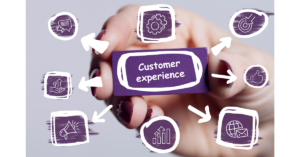Behind every purchase decision is a type of value that the buyer has decided for themselves. Sometimes, much prior to the purchase. While customers are assessing brands at different Moments of Truth, organisations are leveraging all opportunities available, to deliver maximum value. When these companies position themselves as a trusted advisor, customers will check how it fits into their value system. Having products and services fit into categories of values can help brands target specific audiences. When consumers find the ‘right match’ for their value system, they have an opportunity to become a long-term buyer.
In this blog, we will discuss the importance of value and the types of values segregated as per a customer’s purchase decision.
Understand the Types of Value in a Customer Purchase
The price of a product is measured by the currency. In literal sense, what you pay is what you get. In marketing parlance, there is much more than just a monetary tag. A customer would like to get more from paying just the price. The benefits need to outweigh its transactional value. If you can amplify the benefits while keeping the price within acceptable limits, customers may attach a sense of value to your offerings.
Customer value = overall customer benefits > total customer cost.
What are the types of value in a customer purchase?
Brands can deliver value to different customers in various ways. However, each product and service has a certain value attached. There are five types of customer values to explore. Here are some examples of values which are segregated based on how a customer will perceive the purchase value.

Will this be useful in the long run?
This is the functional value. Products are seen with a utilitarian purpose. The product should serve the end goal of the customer. Users of this product expect reliability and efficiency as a basic expectation. However, products will have certain enhanced features that can offer greater outcomes. For example, a branded light bulb that is brighter than a generic bulb. This will help the user see more and better with an upgraded bulb. Goods such as electronic appliances and furniture come with special features that will ease the daily life of a consumer. People might be looking for an alternative to help ease their daily hard work.
Will this amplify my personality and causes I support?
This is the social value . Consumers using products and services based in this spectrum would like to be a part of a good cause. They also see products as something that will allow them a sense of self-expression (including showcasing their personality). The products in this value category can do three things- offer self-expression, provide personal meaning and offer social meaning. For instance, brands that provide tailored suits for men can increase the self-worth and self-respect of consumers. Drinking coffee at a premium coffee chain can be deemed symbolic for some customers.
Will this protect me from external harm or offer support?
This is the emotional value. In this value category, a user will respond emotionally to product/ service offering from an organisation. Buyers will look at offerings in terms of ease of use, psychological help, reduction of risk and overall sacrifices attached to using the product. In this value segment, there are instances such as banking sectors that can offer low risk investment opportunities for account holders. Another example will be anti-virus software that can offer a sense of relief for users who want to protect their sensitive data from prying eyes. Brands focussing on this value segment should be aware that consumers are looking for a low-risk environment and much of human interactions with organisations.
Will this be available for me during an event?
This is the conditional value. As per this value system, people perceive products according to its utility in a very specific situation or event. For example during the festive season, specific greeting cards or gift packages will have a limited availability. During halloween seasons, halloween costumes will sell the most. The value of these products that serve specific events will increase when the event is approaching or nearby.
Will this offer me a brand new experience or knowledge?
This is the epistemic value. This value category is generated by consumers who are looking for a new experience, a learning curve or are curious in general. New products, restaurants or educational platforms often fall in this category. The human urge to find our new lessons or acquire new information such that it emphasizes personal growth. When services focus on good staff behaviour, cleanliness, friendly staff, quick and personalized customer support, this can heighten sensory experience.
How to create valuable customer experiences in a business?
To create valuable experiences, marketers have to gauge the core values of the organisation and create marketing communications around on the basis of these value systems. When this is check-marked, identify pain points, address them actively via various touchpoints and create systems that can ease the process for every customer- new and existing. Here are some ways to create valuable experiences in a business.
Identify their expectations and close that gap
Today’s customers are well versed with market offerings. They come with prior research but they are still clouded with doubts. It becomes imperative to identify their expectations, needs and intentions and see how brands can offer ways to close this gap. Options are limitless for the general consumer. Capture their interest as soon as possible at the initial touchpoints.
Do not leave potential buyers in the dark
This includes offering extra information or service especially in the physical stores or via website chat bots. Staff can be equipped to handle customer queries in stores and offer impromptu solutions. On websites, chat bots or live-chats can offer feasible solutions.

Interactivity between customers and organisations
A happy customer will share experiences with their friends. An unhappy customer will tell the whole world including ranting on social media platforms. Being responsive and closing the feedback loop should be diligently implemented. Customers are constantly communicating with brands. Ensuring seamless conversations among touchpoints can help with the onboarding processes for new customers.
Collect customer feedback swiftly
Seek feedback and do it immediately during an in-moment interaction. This allows us to understand how they feel at the moment. In case of grievances, the staff can be empowered to prevent a churn and convert it to a ‘customer’s delight’. Build your own Whatsapp surveys and capture dynamic responses using AMP emails. Launch web based chatbots and deploy customer satisfaction metrics to grab important customer feedback.
Create seamless omnichannel foundation
People love a seamless customer journey. This is the key to stronger customer retention rates. Potential buyers are on a lookout for options in the event of a negative experience. They are willing to pay extra especially when customer service among touchpoints are standardized, humanized and puts less cognitive load on respondents. Use smart customer journey mapping tools and capture multi channel feedback without any technical hassle.
Conclusion
People have their own set of religious beliefs and moral values. Similarly, people will also try to make purchases that will fit their world view of personal values. Every purchase has an intent. For example, people may choose to consume vegetarian products based on ethical values revolving around fairness and kindness towards the treatment of animals. Other purchases can elevate someone’s social status or ease their daily work schedule. What connects all of the customer’s is their quest to get a seamless experience at every organisation. It becomes important to know how your customers feel at every touchpoint when they come with the intent to purchase.
To capture your customer’s experience during the customer mapping journey, sign up on Merren and take advantage of this robust platform. Sign up for a 14 day free trial and supercharge the way you collect feedback.





